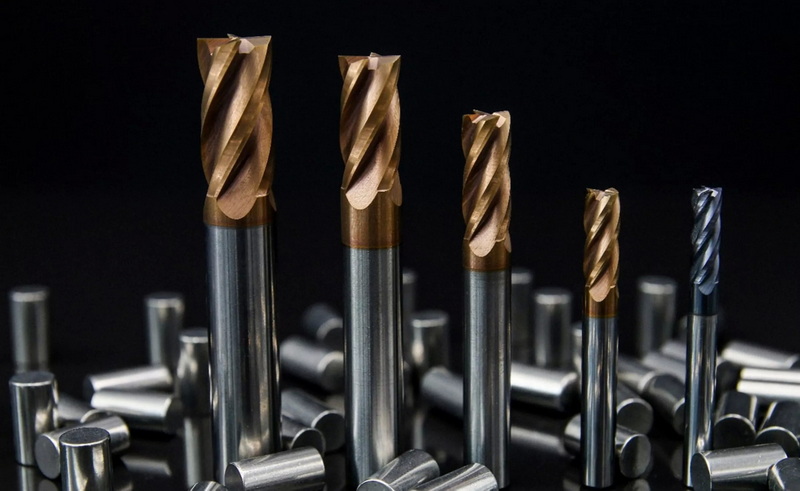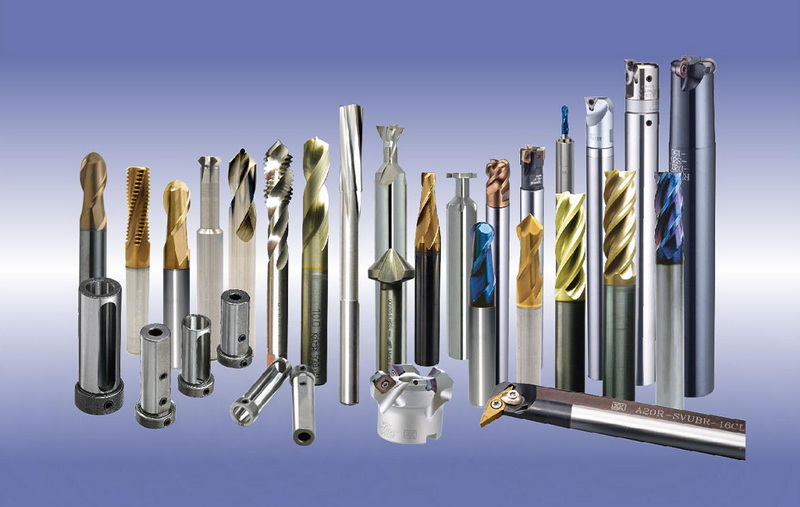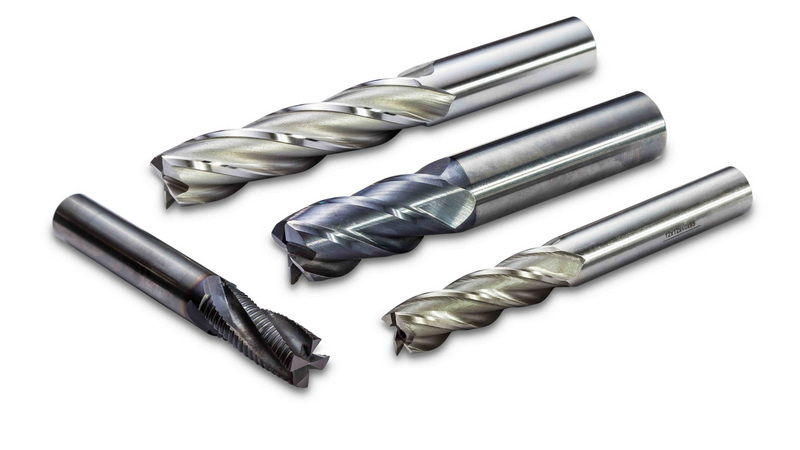Content Menu
● Introduction to Carbide and HSS
>> Carbide
>> HSS
● Key Differences Between Carbide and HSS Products
>> Composition and Properties
>> Performance and Applications
>> Heat Resistance
>> Cost and Durability
● Choosing Between Carbide and HSS Products
● Advanced Carbide Innovations
● HSS-PM: Bridging the Gap
● Carbide and HSS in Specific Machining Operations
>> Drilling
>> Tapping
>> Milling
● Conclusion
● FAQ
>> 1. What is the primary difference in composition between carbide and HSS tools?
>> 2. Which tool is more suitable for high-speed machining operations?
>> 3. What are the advantages of using HSS tools over carbide tools?
>> 4. How do carbide and HSS tools differ in terms of durability and maintenance?
>> 5. In what scenarios would you prefer to use carbide over HSS tools?
● Citations:
In the realm of machining and metalworking, two materials stand out for their durability and performance: carbide and high-speed steel (HSS). Both are widely used in the production of cutting tools, such as drill bits, end mills, and inserts, but they have distinct properties that make them suitable for different applications. Understanding the differences between carbide and HSS products is crucial for selecting the right tools for specific tasks.

Introduction to Carbide and HSS
Carbide
Carbide tools are made from a composite material consisting primarily of tungsten carbide (WC) particles bonded together by a metallic binder, typically cobalt (Co). This composition gives carbide its exceptional hardness, wear resistance, and ability to maintain sharpness at high temperatures. Carbide tools are ideal for high-speed machining operations involving tough materials like stainless steel, titanium, and cast iron.
HSS
High-Speed Steel (HSS) tools, on the other hand, are made from a steel alloy that includes elements such as tungsten, molybdenum, chromium, and vanadium. These additions enhance the steel's hardness and heat resistance, making HSS suitable for a variety of machining operations, especially those involving softer materials like aluminum, brass, and wood. HSS tools are known for their toughness and ability to withstand shocks and vibrations better than carbide tools.
Key Differences Between Carbide and HSS Products
Composition and Properties
- Carbide: Composed of tungsten carbide and cobalt, offering high hardness (HRC 70-92) and excellent wear resistance. It is less tough but maintains its cutting edge well at high temperatures.
- HSS: Made from carbon steel with added tungsten, molybdenum, chromium, and vanadium. It has a lower hardness (HRC 62-65) but is tougher and more resistant to shock.
Performance and Applications
- Carbide: Ideal for high-speed operations on hard materials due to its high hardness and heat resistance. It provides a longer tool life and better surface finish but is more expensive and brittle.
- HSS: Suitable for low to medium-speed operations on softer materials. It is cost-effective, easier to sharpen, and more versatile but wears faster and cannot handle high-speed cutting as well as carbide.
Heat Resistance
- Carbide: Maintains its hardness even at high temperatures, making it suitable for applications where heat generation is significant.
- HSS: While it can withstand high temperatures, it softens more quickly than carbide and is not ideal for high-speed machining.
Cost and Durability
- Carbide: More expensive initially but offers longer tool life and better performance, which can offset the cost in high-volume production.
- HSS: Less expensive and suitable for low-volume or less demanding tasks. It requires more frequent sharpening but is easier to resharpen.
Choosing Between Carbide and HSS Products
The choice between carbide and HSS products depends on several factors:
- Material Being Cut: Carbide is better for hard materials like stainless steel and titanium, while HSS is suitable for softer materials such as aluminum and wood.
- Cutting Speed: Carbide tools can operate at much higher speeds than HSS tools.
- Budget: HSS tools are generally cheaper upfront, but carbide tools offer longer tool life and better performance over time.
- Machining Conditions: Carbide is ideal for stable, high-speed operations, while HSS is better suited for applications with potential vibrations or shocks.

Advanced Carbide Innovations
Recent advancements in carbide technology have led to the development of nanograin carbide and sub-micron carbide. These materials offer even higher hardness and wear resistance, making them ideal for high-speed machining and fine finishing operations. Nanograin carbide, with grain sizes in the nanometer range, enhances the material's strength and is used in applications demanding exceptional performance, such as cutting very hard materials like titanium and stainless steel[6][7].
HSS-PM: Bridging the Gap
HSS-PM (Powder Metallurgy) tools have been developed to combine the benefits of both HSS and carbide. Produced from a powder similar to carbide, HSS-PM tools achieve a finer grain structure, allowing them to reach higher hardness levels than conventional HSS while maintaining excellent toughness. This makes HSS-PM tools suitable for applications requiring both durability and resistance to shock, such as rough milling operations where carbide's brittleness might be a concern[1][5].
Carbide and HSS in Specific Machining Operations
Drilling
- Carbide Drill Bits: Ideal for high-volume hole production, especially in hard materials. They offer higher cutting speeds and longer tool life but are more expensive and brittle.
- HSS Drill Bits: Economical for low-volume production, less brittle, and easier to resharpen. Suitable for softer materials and less stable machining conditions.
Tapping
- Carbide Taps: Best for high-volume production of threads in hard materials. They provide faster cutting speeds and superior thread quality but are more brittle and expensive.
- HSS Taps: More forgiving in less rigid setups, cost-effective, and easier to resharpen. Suitable for general-purpose tapping and softer materials.
Milling
- Carbide End Mills: Offer higher cutting speeds and longer tool life, ideal for machining hard materials. They provide better surface finishes but are more expensive.
- HSS End Mills: Suitable for manual milling machines, smaller volumes, and less rigid setups. They are cost-effective but wear faster than carbide.
Conclusion
In conclusion, carbide and HSS products each have their unique advantages and disadvantages. Carbide tools are renowned for their hardness and heat resistance, making them ideal for high-speed machining operations involving tough materials. On the other hand, HSS tools offer toughness and versatility, making them suitable for a wide range of applications, especially those involving softer materials or less stable machining conditions. Understanding these differences is crucial for optimizing tool selection and improving machining efficiency.

FAQ
1. What is the primary difference in composition between carbide and HSS tools?
Carbide tools are composed of tungsten carbide particles bonded by cobalt, while HSS tools are made from carbon steel alloyed with elements like tungsten, molybdenum, and chromium.
2. Which tool is more suitable for high-speed machining operations?
Carbide tools are more suitable for high-speed machining due to their high hardness and heat resistance.
3. What are the advantages of using HSS tools over carbide tools?
HSS tools are cost-effective, easier to sharpen, and more resistant to shock and vibrations, making them suitable for less demanding tasks or unstable machining conditions.
4. How do carbide and HSS tools differ in terms of durability and maintenance?
Carbide tools have a longer lifespan and require less frequent sharpening but are more brittle and difficult to repair. HSS tools need more frequent sharpening but are easier to resharpen.
5. In what scenarios would you prefer to use carbide over HSS tools?
Carbide tools are preferred for high-precision work, high-volume production, and operations involving hard materials where maintaining a sharp cutting edge is crucial.
Citations:
[1] https://www.aimsindustrial.com.au/blog/hss-vs-carbide
[2] https://www.kennametal.com/us/en/products/metalworking-tools/new-products.html
[3] https://onmytoolings.com/hss-vs-carbide/
[4] https://primatooling.co.uk/cutting-material-comparison-pcd-vs-tct-vs-solid-carbide-vs-hss/
[5] https://suttontools.co.nz/blog/news/hss-or-carbide-tools-that-is-the-question/
[6] https://www.cutwel.co.uk/blog/carbide-vs-hss-milling-cutters.html
[7] https://www.finderhardware.com/the-latest-innovations-in-scientific-cutting-tools-for-precision-engineering/
[8] https://tjgrinding.com/blog-post/comprehensive-guide-pros-and-cons-carbide-tools-and-hss
[9] https://www.tivoly.com/en/choose-hss-drill-carbide-drill
[10] https://f-britsch.com/en/products/solid-carbide-hss-cutting-tools/
[11] https://www.carbide-products.com/blog/tungsten-carbide-and-hss/
[12] https://huanatools.com/carbide-and-hss/
[13] https://www.zccct-europe.com/en/company/news/
[14] https://www.aloktools.com/carbide-or-hss/
[15] https://www.eyan.com/en-US/newsc38-the-benefits-of-hss-and-carbide-blades-with-eyan-s-precision-sharpening-technology
[16] https://kobelco-coating.com/en/application/cuttingtool.html
[17] https://primatooling.co.uk/comprehensive-guide-to-cutting-tool-materials-and-their-applications/
[18] https://www.tool-tool.com/hss.htm
[19] https://www.ijser.org/researchpaper/Carbide-Cutting-Tools-Are-Superior-to-High-Speed-Steel-HSS-for-Manufacturing-A-Review.pdf
[20] https://www.hit-tw.com/newsdetails.aspx?nid=298
















